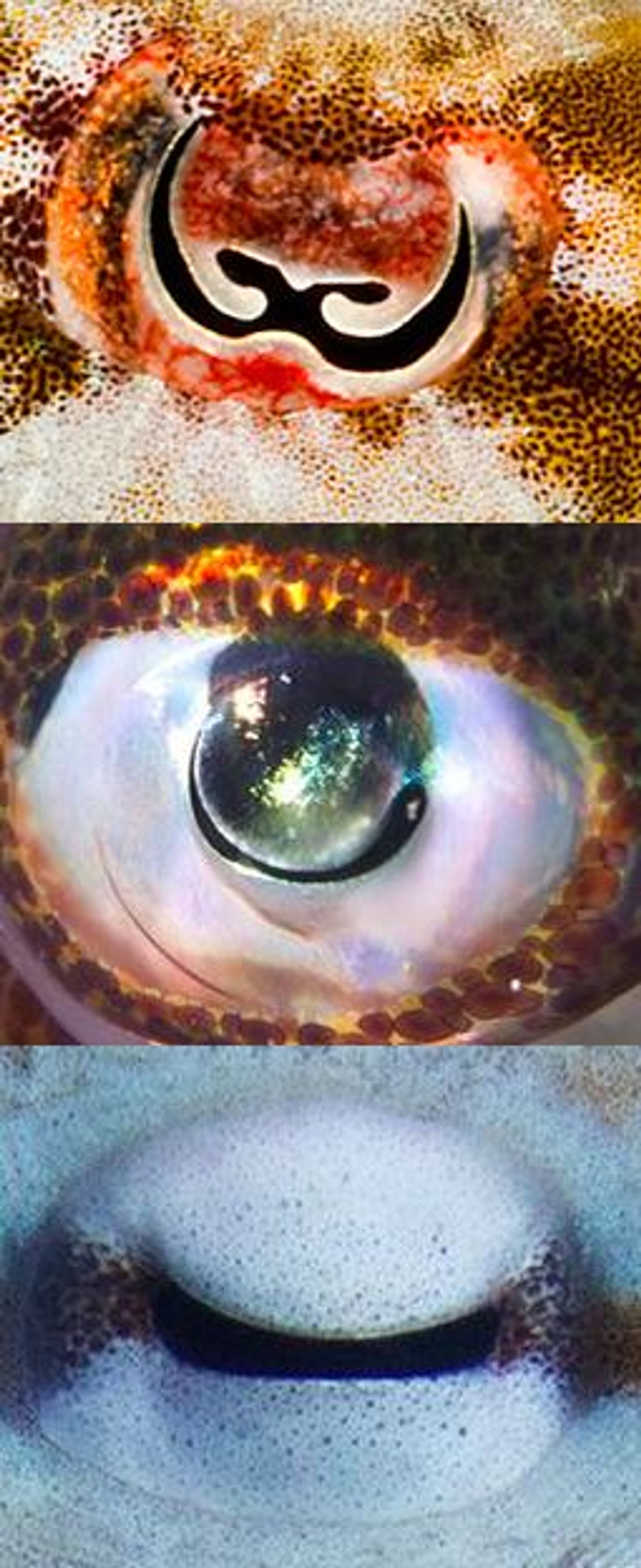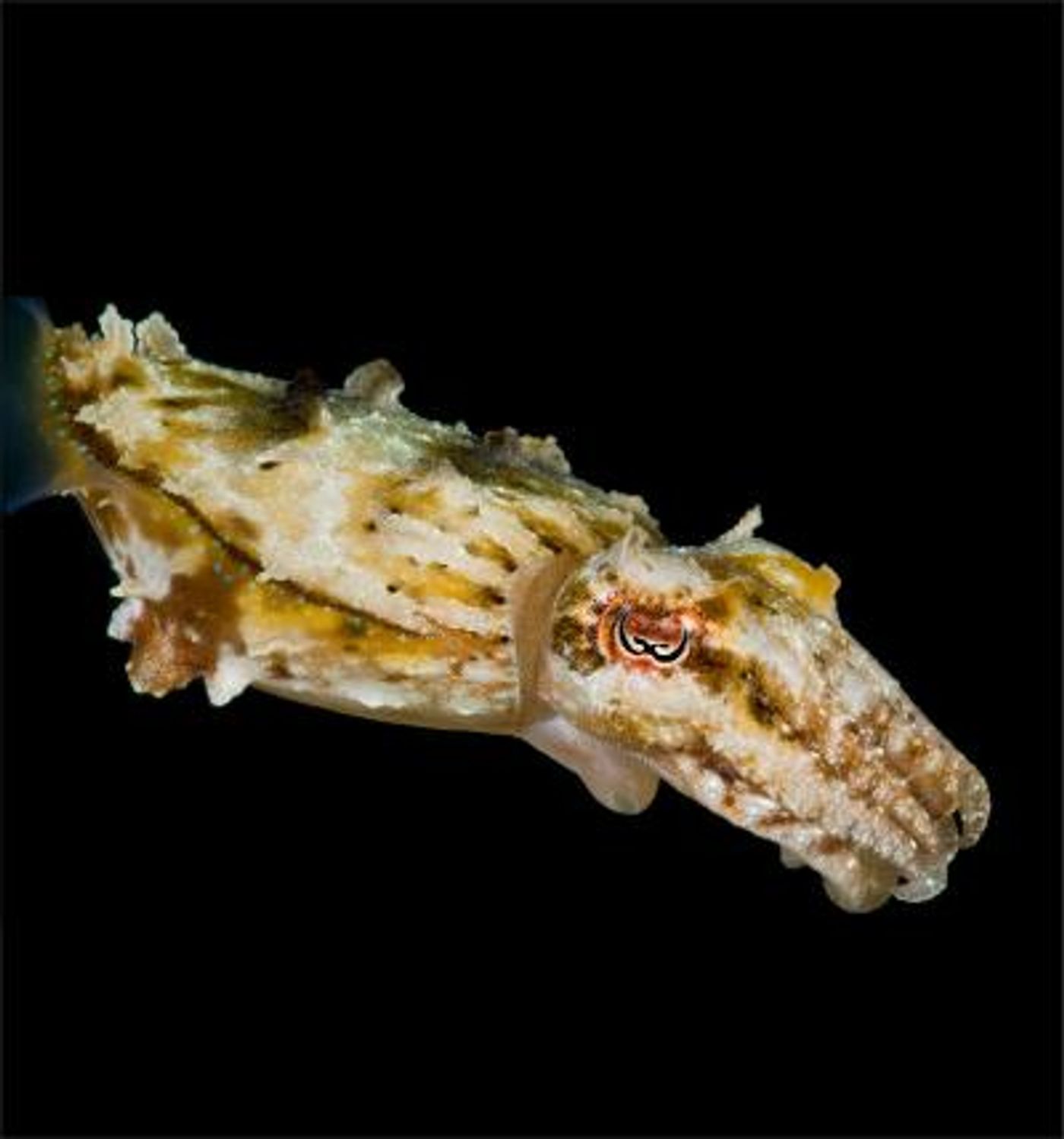It’s long been accepted that cephalopods – such as squids and octopuses – are unable to see color because their eyes contain only one kind of receptor. New work however, shows that their pupils, which have a highly unusual shape, do in fact allow them to sense color and thus, mimic the features of their backgrounds.
A
study in the Proceedings of the National Academy of Sciences by UC Berkeley graduate student Alexander Stubbs in collaboration with his father, Harvard astrophysicist Christopher Stubbs, suggests cephalopods could be able to see color but in a different way from other animals. They developed a computer simulation that modeled how cephalopod eyes might use chromatic aberration to sense color.
Their secret is an unusual, U-shaped, W-shaped or dumbbell-shaped pupil that lets light enter the eye through the lens from a variety of directions, instead of straight into the retina.
The eyes of humans and other mammals have round pupils that can contract to pinholes, giving us clear, crisp vision, with all colors directed on the same place. But when pupils dilate, everything becomes blurry with colorful fringes around objects, a phenomenon known as chromatic aberration. That occurs because the lens of the eye behaves like a prism, splitting white light into component colors. As the area of the pupil through which light enters increases, the colors are further spread out. Thus, as the pupil (of a human) gets smaller, the chromatic aberration is reduced. Camera and telescope lenses also suffer from chromatic aberration, so photographers will reduce the amount of light entering (or stop down) their lenses to capture the sharpest image with the lowest amount of color blurring.

Cephalopods, however, have evolved large, wide pupils that actually accentuate the chromatic aberration, Stubbs explains, and could have the ability to sense color by bringing certain wavelengths into focus on the retina, in the way animals such as chameleons ascertain distance by using relative focus. Altering the depth of their eyeball, which changes the distance between the lens and the retina, focuses the wavelengths. The pupil moves around to change its location and reduce the amount of chromatic blur.
"We propose that these creatures might exploit a ubiquitous source of image degradation in animal eyes, turning a bug into a feature," Stubbs said. "While most organisms evolve ways to minimize this effect, the U-shaped pupils of octopus and their squid and cuttlefish relatives actually maximize this imperfection in their visual system while minimizing other sources of image error, blurring their view of the world but in a color-dependent way and opening the possibility for them to obtain color information."
"We believe we have found an elegant mechanism that could allow these cephalopods to determine the color of their surroundings, despite having a single visual pigment in their retina," Stubbs continued. "This is an entirely different scheme than the multi-color visual pigments that are common in humans and many other animals. We hope this study will spur additional behavioral experiments by the cephalopod community."
Sources:
AAAS/Eurekalert!,
PNAS










